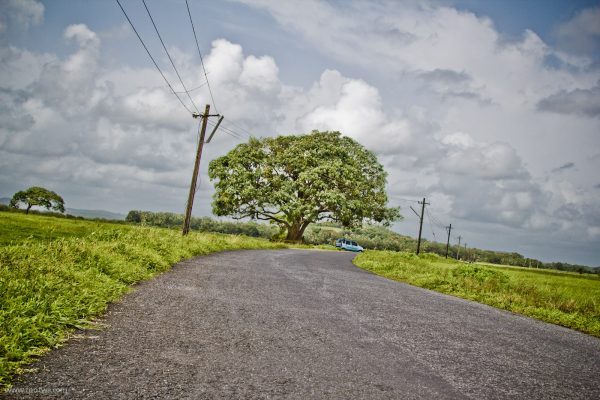Goa is full of little villages from north to south. All of them are beautiful in their own way. They are all scenic, surrounded by lush forests, ponds, lakes, rivers and even the sea. Two very pretty and scenic villages are the sister islands of Chorao and Divar located across the river Mandovi. Both are a short distance from the new capital city of Panjim and old one of Old Goa.
The scenic villages of Chorao and Divar
Chorao Island
Chorao Island is a picturesque, green village located just across the Mandovi river. It’s about 5 kilometres from Panjim city and is accessible by ferry from the village of Ribandar. Ribandar is on the way to old Goa and is the end point of the well-known Ponte Conde de Linhares.
Chorao, although one of the smaller scenic villages of Goa, has an interesting history. It’s earliest settlers are believed to be 10 families of the Goud Saraswat Brahmins. Inhabitants of this island village are called Chodankars and they call the island Chodna or Chodan. The island was earlier named Chudamani, the word for ‘stunning precious stone’ in Sanskrit. The island is believed to have appeared when Yashoda, the mother of Lord Krishna threw away these precious stones.
Churches on Chorao
Chorao was also known as Ilha dos Fidalgos (island of noblemen) for a short while as the Portuguese noblemen found it pleasant to visit. The island has churches and temples on it as well. The church of St. Bartholomew, founded by the Jesuits and erected in 1569, is one famous church located on the island. The church’s magnificent facade points to the Arabian sea and reflects the grandeur of Mannerist Neo-Roman architectural style. The church was transferred to the diocesan clergy before 1642 and it was remodeled in 1649. A second church, Our Lady of Grace was built in Maddel, a locality in this scenic village. This church was known for its large fairs that were held on the feast day. Here, horses, camels, and textiles were traded by foreign merchants at the feast.
Temples on Chorao island
A number of ancient temples dotted this island before the Portuguese invaded Goa. These included Ganesha, Ravalnatha, Bhaukadevi, Mallinatha, Bhagvati, Devki, Santa-Purusha, Barazan, Narayan, Cantessor, Chandeussor, and Dadd-Sancol. However, when the Portuguese destroyed all the temples, the idols of the deities were smuggled out to the neighboring villages of Naroa and Marcela.
A centre of education too
Another known fact about this scenic village is that it was also a centre of learning. At one time there existed a branch of a University that was affiliated with the University in Benares.It had its own seat of learning, teaching Sanskrit and ancient literature. On April 2, 1761, when the Oratorians took over the academic responsibilities, a seminary known as Real Colegio de Educacao de Chorao was also established.
Divar Island
Another of Goa’s scenic villages along the Mandovi river is the lush island of Divar. A truly beautiful island village, surrounded by paddy fields, with roads that wind inland. Divar is located approximately 10 kilometres from Panjim and is again accessed by ferry from Old Goa. The ferry wharf is located near the Viceroy’s Arch. Another ferry links the northern end of the Divar Island to the Narve or Naroa village in Bicholim which is known for the Saptkoteshwar temple. This is one of the most sacred temples in Goa.
One can even visit the famous Mayem lake in Bicholim, using Divar as a shortcut. This lake was rumored to have crocodiles once upon a time.
As one of Goa’s many scenic villages, the island of Divar is divided into two areas known as Piedade and Malar. Both are typical Goan villages with Goan homes reminiscent of the Portuguese era, village squares, and tiny taverns. Divar’s claim to fame is Bonderam, the Festival of Flags held every year on the last Saturday of August. It is a loud affair and is visited by people from all over the state. This feast is also known as the feast of the harvest. Here, after returning home, the emigrant workers wave the flags of their adopted countries while marching through the village.
Information credit – Information is taken from different articles on Google
ItsGoa/APR/KDGP


